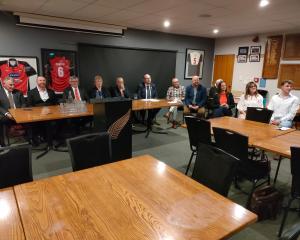
Council chairman Peter Haddock says the figures are flawed.
The West Coast Regional Council’s [WCRC] total rates increase this year was in fact 18% — higher than the Taxpayers Union figure of 12%, he said.
The council itself previously reported the increase as 12%, but the figure did not include targeted rates and charges for Civil Defence and the new District Plan.
But the total rate rise over three years was lower than the Taxpayers’ Union figure of 65%, Mr Haddock said.

The council had previously started to fail on delivering mandatory work programmes because of cost cutting in previous years, and it was running an unbalanced budget, using mining bond deposits and prudent flood protection reserves held on behalf of ratepayers, to cover operational costs, Mr Haddock said.
The cost of administering the new combined district plan had also landed on the council, along with the cost of upgrading flood protection for Westport, Franz Josef and Hokitika.
"I know West Coasters are doing it tough, and I know average incomes for many people are considerably less than the rest of the country. But I also know kicking the can along isn’t good business practice," Mr Haddock said.
The impact of the 18% rate rise on individual ratepayers would vary.
"Those with properties with a higher capital value will pay more rates than those with a lower capital value, that is fair."
"We will not ... live beyond our means. The government expects us to be financially prudent, and more importantly, so do Coasters. We’ve worked hard to rebuild council and ensure it is positioned to deliver for the community."
The WCRC’s job was to create the environment for the community and businesses to thrive, the Chair said.
Striking the right balance between development and management of effects was difficult when those effects took a long time to appear or were not fully understood, but the council had to ensure future generations did not have to pay for its mistakes, Mr Haddock said.
As the council completed the flood protection schemes, the costs passed on to the community would significantly reduce, he said. -
■LDR is local body journalism co-funded by RNZ and NZ On Air.
- By Lois Williams











